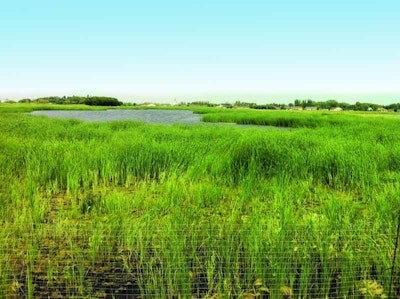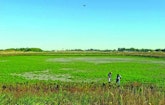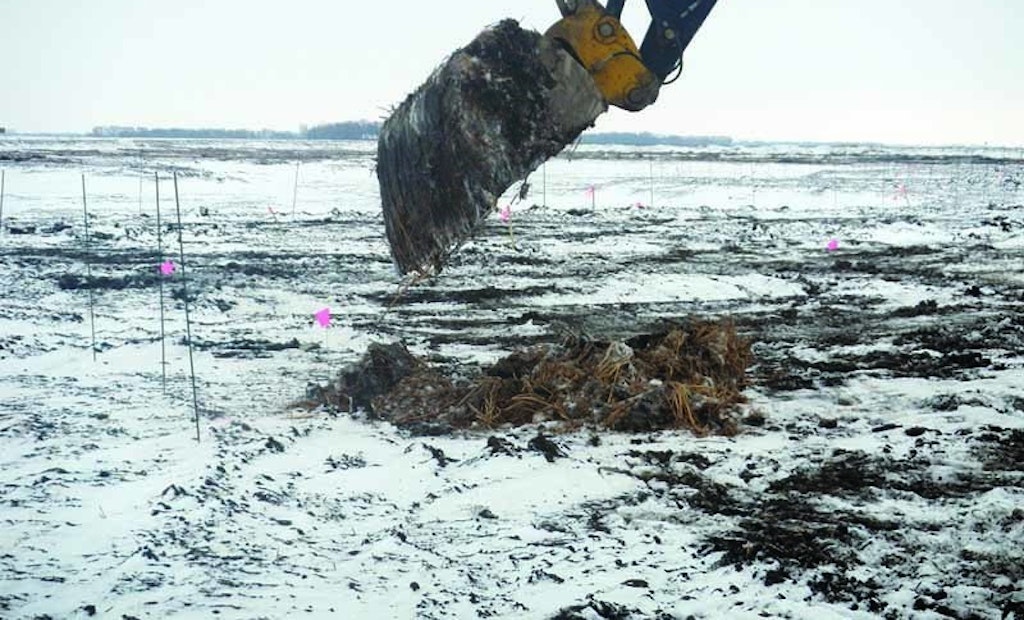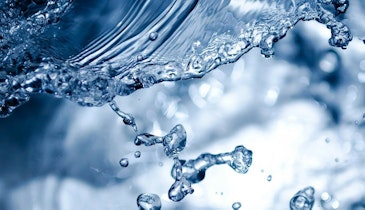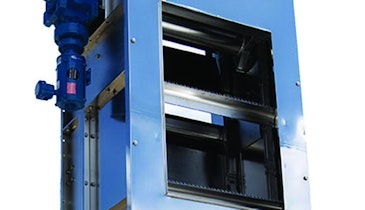Through an unconventional approach to decommissioning a two-cell wastewater treatment lagoon covering 30 acres, the Manitoba Town of Niverville nearly halved its decommissioning cost, created a visitor attraction and won an award for innovation and sustainability.
“Bioremediation was the answer to our problem,” says Ryan Dyck, town operations manager, who oversees the newly converted wetland. When the town built a larger four-cell lagoon system as a replacement across town in 2007, its license required decommissioning the old lagoon. Traditionally, that would have meant removing settled solids to a landfill site or applying it to cropland. Either option would have been costly.
In search of a solution, the town partnered with the Native Plant Solutions (NPS) consulting branch of Ducks Unlimited Canada. The parties worked together on an alternative: treating the material on site using wetland plants.
First in Canada
Lisette Ross, senior wetland specialist with NPS, says that because this method of bioremediation at the end of a lagoon’s life had never been used before in Canada, the project had to be backed by sound science to get the support of provincial regulators. NPS partnered with researchers from the University of Manitoba to design a study investigating the approach.
A three-phase research project began in 2012 to assess contaminant reduction in wastewater solids using wetland and upland phytoremediation.
“To date, both the greenhouse and field phases of research, which focused on cattails and switchgrass, are complete,” says Ross. “The third research phase focuses on harvesting the reusable biomass and recapturing the nutrients and trace metals.”
In summer 2012, excavators, bulldozers and other earth-moving equipment went to work altering the original lagoon design. Removed solid material was relocated and contoured to support plant growth. Heavy equipment placed wetland plants — mainly cattails and switchgrass — during winter when the plants were dormant and less vulnerable to damage.
A portion of the second cell of the original lagoon was converted to a holding pond used to control the water level in the new wetland and as a control cell for ongoing research. The remainder was converted for upland phytoremediation.
Supplying water
Winter snowpack, spring melt and surface runoff redirected from the town provided some initial water to the wetland for the first growing season in 2013. The rest came from the holding pond. Water availability was critical to the wetland during the first growing seasons, and it was necessary to manipulate the water supply to allow new plants to germinate. The wetland is designed to function at a stable water level, and since the initial growing season little manipulation has been required.
“We mechanically pump water into the wetlands from the holding pond when required,” Dyck says. “If we ever need to drain the wetland, it is set up to drain back using gravity.” After three years of plant growth and wetland operation, research results show a decline in nitrogen, phosphorus and trace element concentrations.
Dyck says Niverville’s approach to bioremediation set a new standard for decommissioning a lagoon responsibly. In 2014, the town received the Manitoba Excellence in Sustainability Award in the category of Innovation and Research for Sustainability.
Community asset
Future plans for the wetland are to integrate it into a nearby 91-acre town park that is a focal point of community use for sports, picnicking, hiking and biking. Trails through the wetland will lead to an interpretive site for school groups and citizens. Bird watchers already enjoy species such as horned grebe, red-winged blackbird and mallard ducks.
“The intention of the Town of Niverville was to decommission the lagoon in an environmentally friendly, sustainable and economic manner,” says Dyck. “And with the help of NPS, we did that.”
